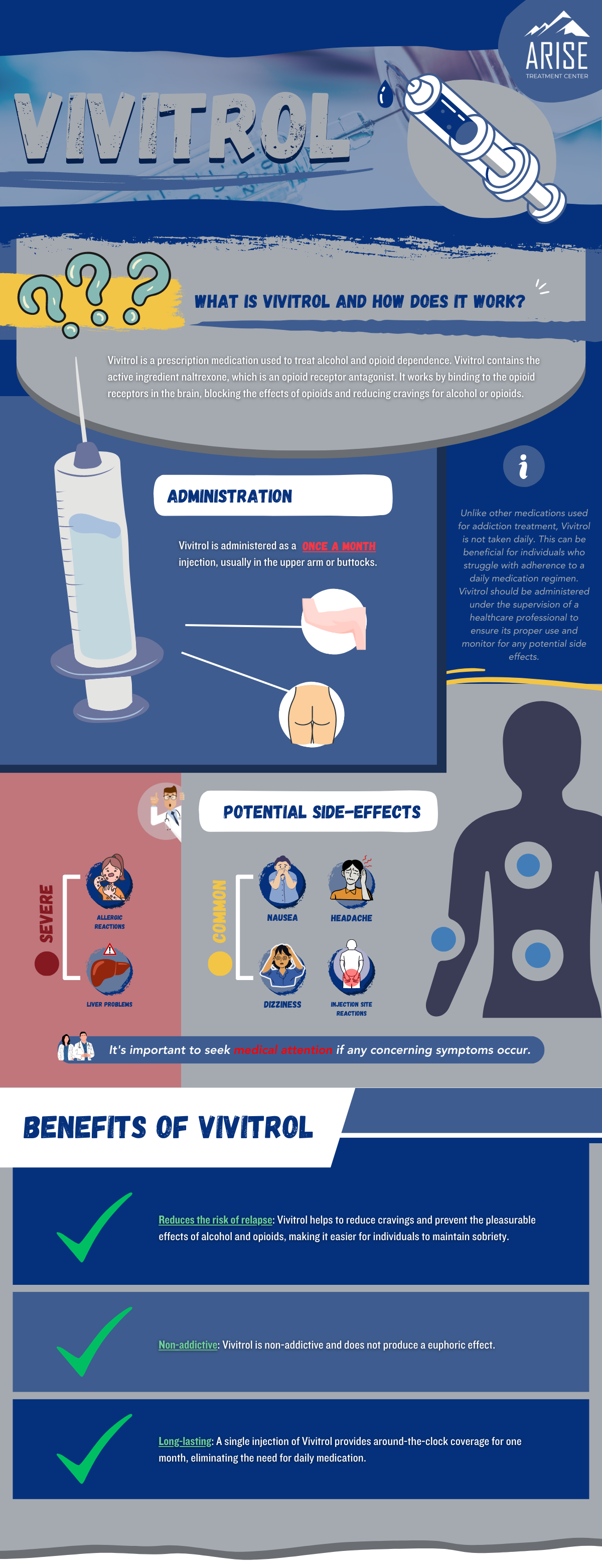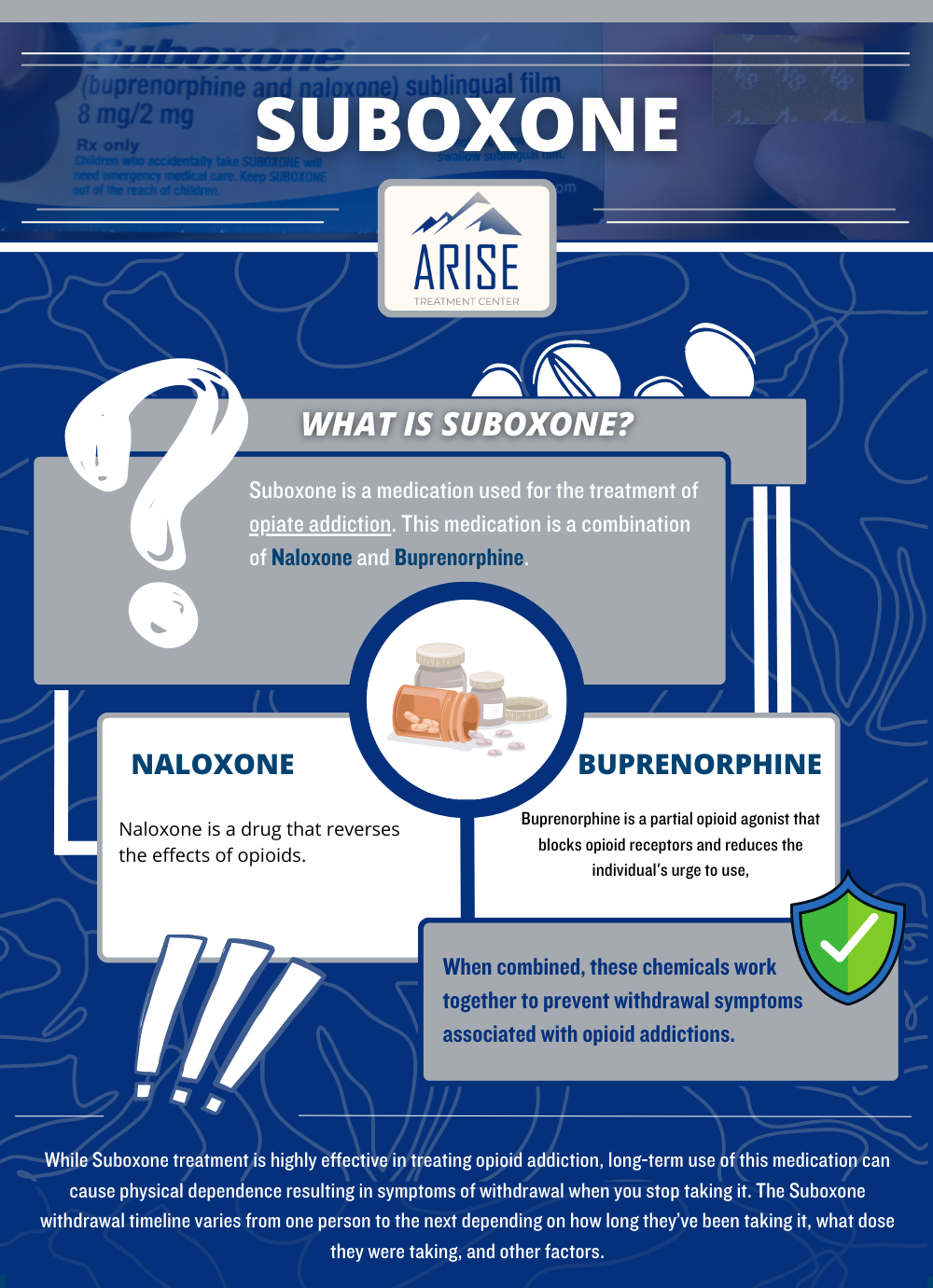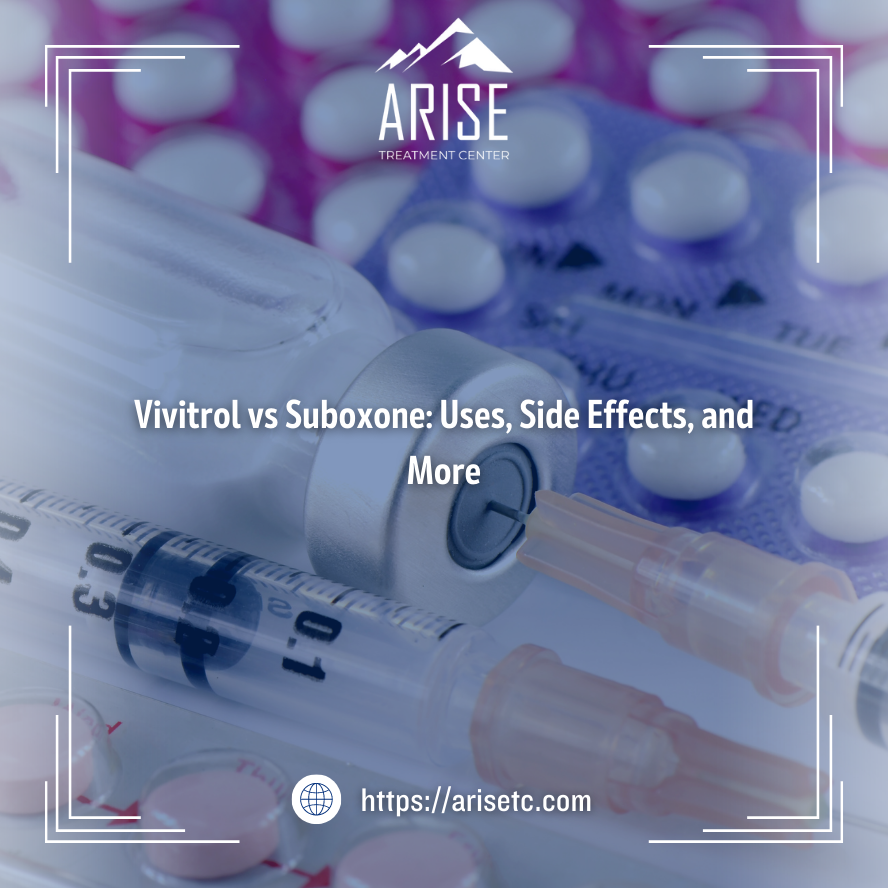Opioid addiction is a growing problem in the United States, with more than 2.7 million people in the U.S. affected. Although recovery is possible, and many people today are living in recovery from opioid addiction, maintaining sobriety can be incredibly difficult. Between the emotional effects of addiction, the physical symptoms of withdrawal, and intense drug cravings, beating opioid addiction can feel impossible.
Despite opioid abuse and addiction rates getting worse each year, treatment approaches are becoming more comprehensive and effective. Today, many people who want to achieve recovery from opioid addiction turn to medications like Vivitrol or Suboxone to help them manage their addiction and get on the road to recovery. Both of these medications are commonly used in opioid addiction treatment programs, but they work in different ways and can have different side effects and potential risks.
If you or someone you love are struggling with opioid addiction, Suboxone or Vivitrol may be right for you. Reach out to ARISE Treatment Center today for a risk-free consultation so you can get your recovery started.
What is Vivitrol?
Vivitrol is the brand name for a medication called naltrexone. Naltrexone is an opioid antagonist, which means that it blocks the effects of opioids on the brain, and is sometimes prescribed in pill form to reduce the risk of relapse and alleviate cravings in people struggling with an addiction to opioids or alcohol.
Unlike daily naltrexone, Vivitrol is a once-monthly intramuscular injection that is administered by a healthcare provider. It is approved by the U.S. Food and Drug Administration (FDA) for the treatment of opioid dependence and alcohol dependence. The Vivitrol shot is usually administered in the buttocks and supplies the body with a steady dose of naltrexone for about 30 days.
Vivitrol is different from other medications used to treat opioid addiction, such as Suboxone (buprenorphine/naloxone), because it does not contain any habit-forming opioids. Instead, it works by blocking the effects of opioids on the brain which can help reduce cravings for opioids and prevent relapse. Vivitrol is also only administered in a healthcare provider’s office and it can’t get you high, so there is little risk for abuse and diversion.
Vivitrol is typically used in combination with other addiction treatment programs, such as counseling or therapy.

What is Suboxone?
Suboxone is a combination medication that contains buprenorphine and naloxone. Buprenorphine is a partial opioid agonist, which means that it activates the same receptors in the brain that opioids do but to a much lesser degree. Naloxone is an opioid antagonist, which means that it blocks the effects of opioids on the brain.
Suboxone is approved by the FDA for the treatment of opioid dependence. It is taken orally as a tablet or sublingual film that dissolves under the tongue. Suboxone is designed to help reduce cravings for opioids and prevent withdrawal symptoms without producing the same intense high as other opioids. It can be taken 12-24 hours after the last dose of opioids to manage symptoms of withdrawal and reduce cravings. Like Vivitrol, Suboxone is most effective when it is used in combination with other addiction treatment programs, such as counseling or therapy.

Uses of Vivitrol vs Suboxone
Both Vivitrol and Suboxone are used in the treatment of opioid addiction, but they work in different ways. Vivitrol is an opioid antagonist, which means that it blocks the effects of opioids on the brain. This can help reduce cravings for opioids and prevent relapse. Vivitrol is typically used in combination with other addiction treatment programs, such as counseling or therapy. Unlike Suboxone, Vivitrol can be used to treat alcohol dependence as well as opioid dependence. Vivitrol will not alleviate symptoms of withdrawal.
Suboxone, on the other hand, is a partial opioid agonist. It activates the same receptors in the brain that opioids do but without producing euphoric effects. This can help reduce cravings for opioids and prevent withdrawal symptoms. Suboxone is only used to treat opioid withdrawal and dependence.
In general, Vivitrol may be a better option for individuals who have already gone through the detoxification process and are no longer using opioids. People must detox fully before starting Vivitrol. Suboxone may be a better option for individuals who are still using opioids or who are in the early stages of recovery because it effectively reduces opioid withdrawal symptoms.
Comparing Side Effects of Vivitrol vs Suboxone
Both Vivitrol and Suboxone can cause side effects, although the specific side effects can vary depending on the individual and the dosage used.
Common side effects of Vivitrol may include:
- Nausea
- Vomiting
- Diarrhea
- Headache
- Dizziness
- Injection site reactions (pain, redness, itching, swelling)
- Muscle cramps
- Insomnia
Less common side effects of Vivitrol may include:
- Allergic reactions
- Liver damage
- Depression
- Suicidal thoughts or actions
Common side effects of Suboxone may include:
- Nausea
- Vomiting
- Constipation
- Headache
- Sweating
- Insomnia
- Back pain
- Withdrawal symptoms (if discontinued abruptly)
Less common side effects of Suboxone may include:
- Allergic reactions
- Liver damage
- Respiratory depression (difficulty breathing)
Both Vivitrol and Suboxone can interact with other medications, so it is important to inform your healthcare provider of all prescriptions you are taking before starting treatment with either of these medications.
Risks and More Considerations
While Vivitrol and Suboxone can be effective tools in the treatment of opioid addiction, there are some potential risks and other considerations to keep in mind.
Vivitrol can cause liver damage in some individuals, particularly those who already have liver problems. Individuals who are prescribed Vivitrol will need to have regular liver function tests to monitor for any signs of liver damage.
The main risk associated with Suboxone is that it can be addictive, especially when abused, and some individuals may develop a dependence on the medication after taking it for extended periods of time. It is important to follow the dosage instructions provided by your healthcare provider and to avoid taking more than prescribed. Additionally, individuals who are prescribed Suboxone should not drink alcohol, because drinking can increase the risk of respiratory depression and other adverse effects.
Suboxone can cause withdrawal symptoms if discontinued abruptly. If you decide to stop taking Suboxone, it is important to do so under the guidance of a healthcare provider to minimize the risk of withdrawal symptoms. Vivitrol, on the other hand, is not habit-forming and will not cause withdrawal symptoms, so it can be discontinued easily.
Find out if Suboxone or Vivitrol is Right For You
Suboxone and/or Vivitrol may not be right for everyone, and you should never take either of these medications without having them prescribed to you by a doctor. However, these medications can be extremely effective in treating opioid addiction and may make it easier to attain lasting sobriety.
If you or a loved one are interested in medication-assisted treatment (MAT), Vivitrol, or Suboxone, the first step toward recovery is just a phone call away. Call now to speak with an admissions counselor about your treatment options.

